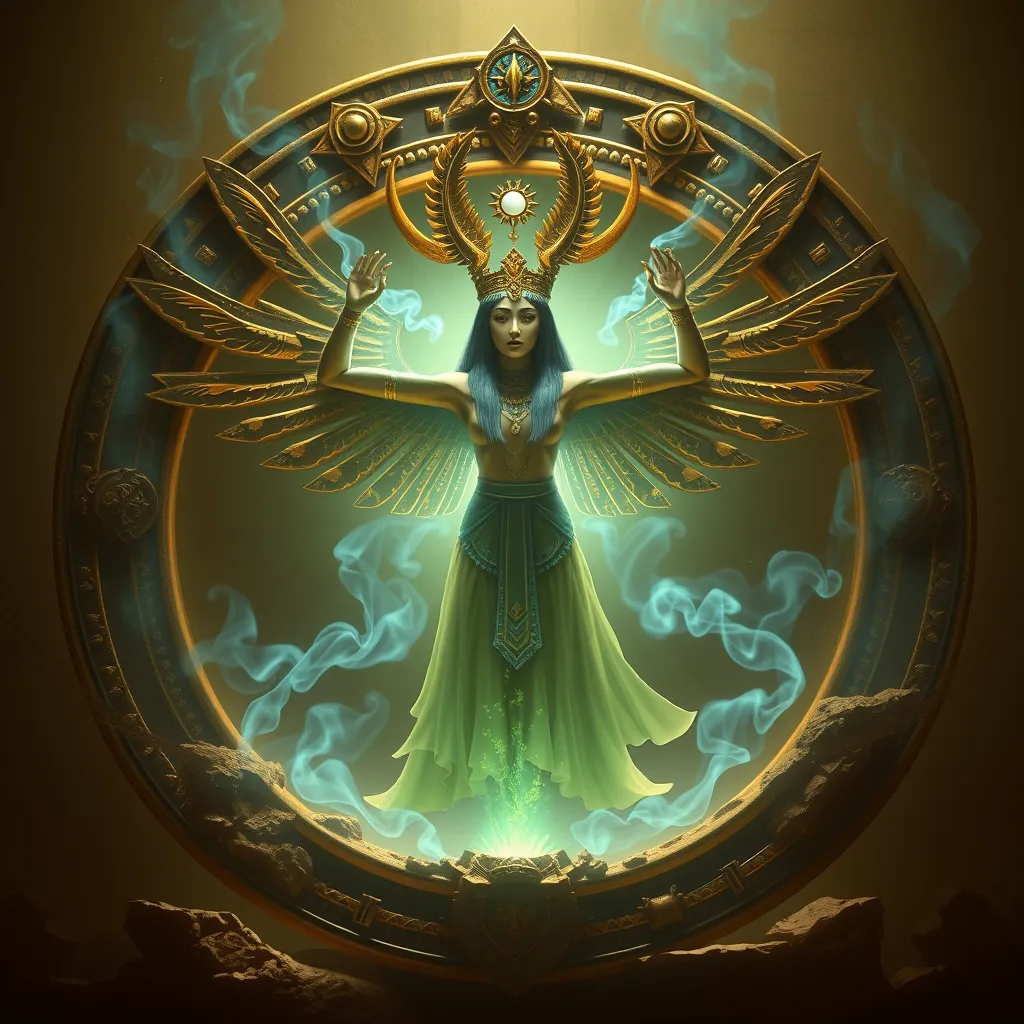The Oracle of Hathor: Exploring the Feminine Power of Prophecy
I. Introduction
The Oracle of Hathor represents a profound connection between the divine feminine and the art of prophecy in ancient Egyptian culture. This oracle, dedicated to the goddess Hathor, served as a conduit for spiritual insight and guidance.
Hathor, a prominent figure in Egyptian mythology, embodies a multitude of virtues, including love, beauty, music, and motherhood. She is often depicted as a nurturing figure, reflecting the vital role women played in both the spiritual and everyday lives of ancient Egyptians.
Feminine power in prophecy is crucial, as it emphasizes the importance of female voices in spiritual matters, highlighting their contributions to wisdom, foresight, and community leadership.
II. Historical Context of Hathor
Hathor’s origins can be traced back to the early dynastic period of ancient Egypt, where she was revered as a goddess of many aspects. Her worship spread across the Nile Valley, with various temples dedicated to her in cities such as Dendera and Thebes.
As the goddess of love, music, and motherhood, Hathor represented the nurturing aspects of femininity, often depicted as a cow or a woman with cow horns adorned with a sun disk. Her dual nature as both a mother and a protector made her an essential deity in the lives of ancient Egyptians.
Women in ancient Egyptian society held significant religious roles, often serving as priestesses in temples. These roles allowed them to participate actively in religious rituals and prophecy, reflecting a society that valued women’s contributions to spiritual practices.
III. The Nature of Prophecy in Ancient Egypt
Prophecy in ancient Egypt was a multifaceted practice deeply rooted in the culture’s spiritual beliefs. Prophetic traditions often involved dreams, divination, and oracles that provided guidance to individuals and the state alike.
Oracles played a vital role in both spiritual and political life, as leaders and commoners sought divine insight during times of uncertainty. The Oracle of Hathor was particularly significant, as it provided a feminine perspective in a predominantly male-led political landscape.
Gender dynamics in prophetic roles were complex; while many oracles were male, the presence of female prophetic figures, such as those connected to Hathor, underscored the essential role of women in these spiritual practices.
IV. The Role of the Temple of Hathor
The Temple of Hathor at Dendera is one of the most significant sites dedicated to the goddess. This temple complex, adorned with intricate carvings and inscriptions, served as a center for worship and prophecy.
Within the temple, various rituals and ceremonies were conducted to invoke Hathor’s blessings and insights. The priests and priestesses of Hathor engaged in practices that included music, dance, and offerings, creating a sacred atmosphere conducive to prophecy.
Rituals associated with the Oracle of Hathor often involved the use of sacred objects, such as the sistrum, a musical instrument that reverberated with the goddess’s energy and helped facilitate communication with the divine.
V. Iconography and Symbolism of Hathor
The artistic representations of Hathor are plentiful, found in many ancient artifacts, including statues, wall paintings, and jewelry. These depictions often emphasize her nurturing qualities and her association with fertility and abundance.
The symbolism of Hathor’s attributes, such as her cow horns and the sun disk, relates directly to themes of nourishment, protection, and divination. These symbols reinforce her role as a goddess who offers guidance and wisdom through the oracle.
The link between art and the divine feminine is evident in the reverence for Hathor. Her imagery is a testament to the power of feminine energy in the spiritual realm, encouraging a deeper understanding of the divine nature of women.
VI. Case Studies of Prophecies from the Oracle of Hathor
Throughout history, several notable figures sought the counsel of the Oracle of Hathor. Pharaohs and military leaders often consulted the oracle before making significant decisions, believing in the goddess’s ability to provide divine guidance.
- One famous case involved Pharaoh Ramses II, who is said to have received crucial prophecies regarding military campaigns.
- Another significant instance is the prophecy concerning the flooding of the Nile, which was vital for agricultural planning.
These prophecies had far-reaching impacts on historical events, shaping the trajectories of dynasties and influencing the everyday lives of the Egyptian people.
VII. The Legacy of the Oracle of Hathor
The influence of the Oracle of Hathor extends beyond ancient Egypt, impacting later spiritual practices and beliefs. The reverence for feminine wisdom has persisted through the ages, inspiring various movements that seek to honor and recognize the strength of women in spiritual contexts.
Contemporary interpretations of Hathor often explore her as a symbol of empowerment and healing, resonating with modern spiritual seekers who emphasize the importance of feminine energy in their practices.
The resurgence of interest in feminine power in modern prophecy reflects a broader cultural shift toward inclusivity and recognition of diverse spiritual voices, encouraging a re-examination of historical figures like Hathor.
VIII. Conclusion
The Oracle of Hathor exemplifies the profound feminine power of prophecy in ancient Egyptian culture, highlighting women’s roles in spiritual practices and decision-making. As we reflect on the relevance of the Oracle of Hathor today, we recognize the enduring significance of feminine wisdom and guidance.
In a world that often overlooks the contributions of women in spirituality, it is essential to explore and honor the legacy of figures like Hathor, embracing the richness of feminine perspectives in contemporary spiritual practices.




